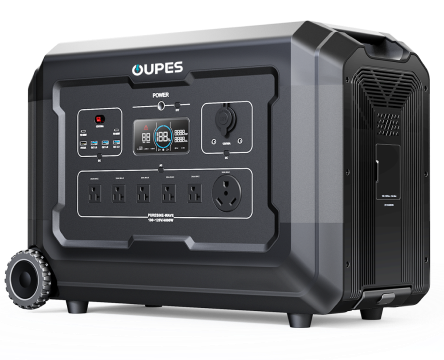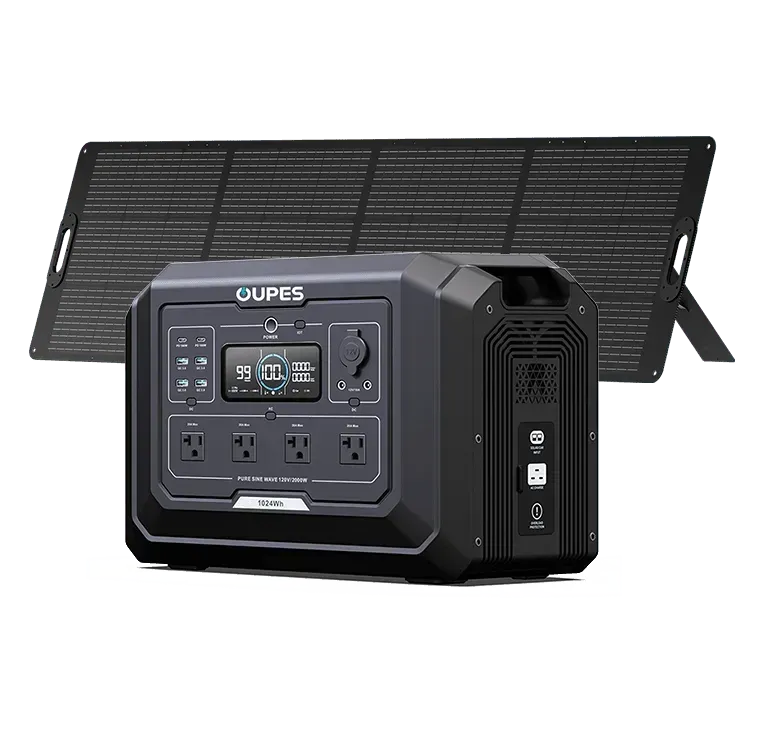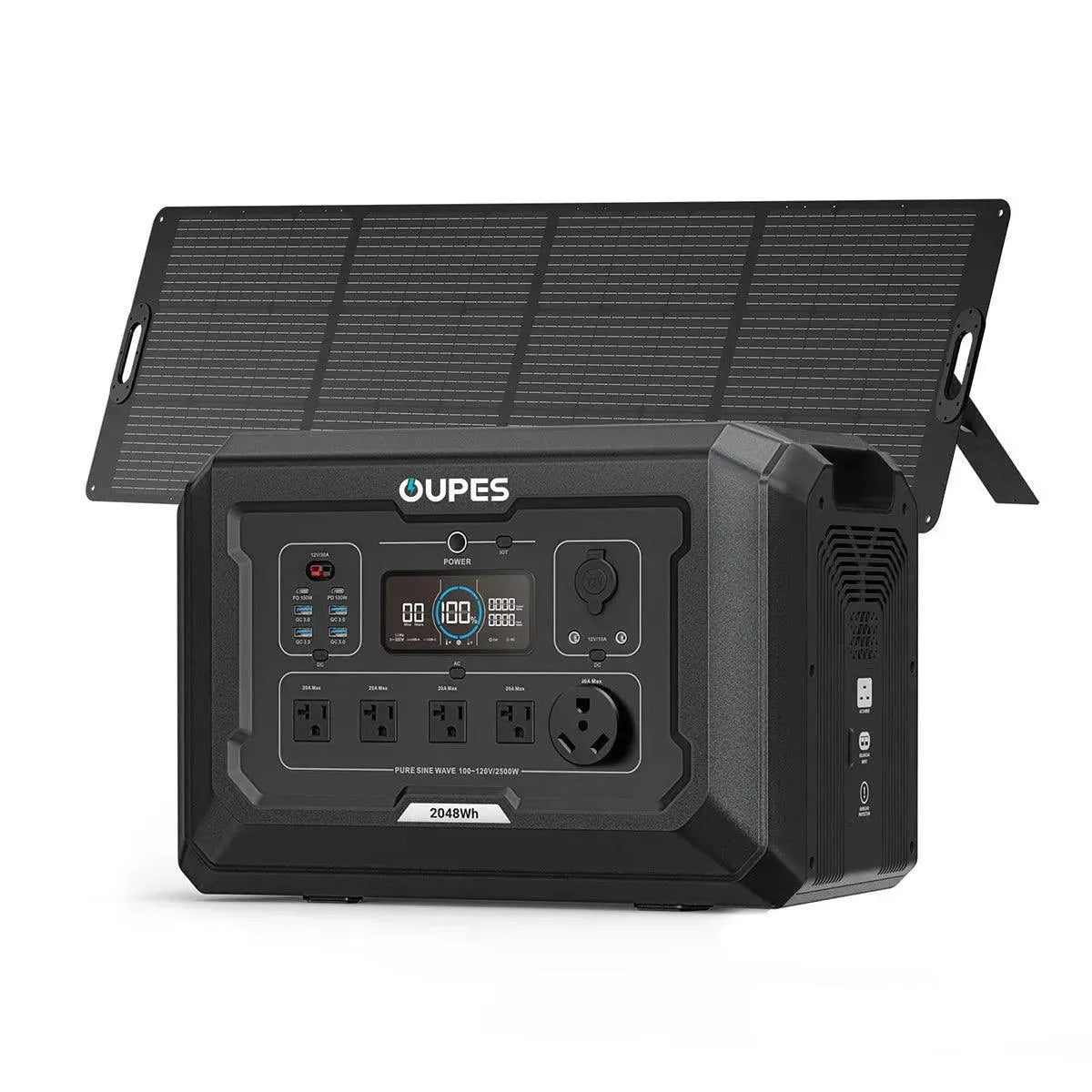
Picture this: you're hosting a backyard party when guests' phones start dying. Your options? Drag extension cords across the lawn or deploy silent solar power. This common dilemma highlights the growing divide between two solar solutions: permanent solar-powered outlets and portable solar generators. As homeowners and outdoor enthusiasts seek sustainable power beyond traditional outlets, understanding which technology fits your needs becomes critical. One offers seamless integration into your landscape, while the other delivers portable energy independence—but the differences run deeper than mobility.
The choice between these systems isn't trivial. It impacts everything from your garden lighting reliability to emergency preparedness during storms. We dissect both technologies—examining installation challenges, power capabilities, and hidden costs—to reveal which solution truly powers your outdoor lifestyle. Whether you're a weekend gardener or an off-grid adventurer, the right choice could save thousands while keeping your devices charged where extension cords can't reach.
Core Technology Breakdown: How Each System Harvests and Delivers Energy
Solar-powered outdoor outlets operate as self-contained microsystems permanently installed in exterior walls or landscape features. These units integrate three critical components: a 20-50W monocrystalline solar panel (weatherproof rated IP65+), an internal lithium battery (typically 10,000-30,000mAh), and smart electronics managing power distribution. Unlike traditional outlets, they function independently from your home grid—charging exclusively via sunlight and delivering energy through standard 120V AC receptacles or USB ports. Advanced models like the Sunology PowerPost include motion-activated security lighting and frost-resistant construction for year-round operation. Their fundamental limitation is fixed positioning: once installed near a patio or garden path, they can't relocate to sunnier spots during seasonal shade shifts.
Solar generators with outlets represent portable power stations with detachable solar panels. These systems feature significantly larger batteries (500Wh to 3kWh in premium models) paired with MPPT charge controllers that optimize solar harvesting efficiency. Unlike fixed outlets, they decouple energy capture from delivery: panels can be positioned 30+ feet away in optimal sunlight while the generator unit remains conveniently accessible. Bluetti's EB70S exemplifies this flexibility, allowing users to angle panels toward the sun while keeping the power station shaded under a canopy. The generator's core advantage lies in its multi-input charging capability—supplementing solar with AC wall charging, car charging, or even gas generator inputs during prolonged cloud cover. This creates layered redundancy that fixed outlets can't match.
The energy conversion process differs dramatically between systems. Permanent outlets use simple PWM controllers that directly feed solar energy to batteries with minimal processing, resulting in 70-80% efficiency. Solar generators employ advanced MPPT technology that adjusts electrical resistance to extract 30% more energy from panels under variable conditions. When delivering power, fixed outlets convert stored DC to AC through basic inverters (often modified sine wave), which may cause humming in audio equipment. Portable generators universally feature pure sine wave inverters (under 3% THD) that safely power sensitive electronics like CPAP machines. This technological gap explains why solar generators cost more but deliver cleaner, more adaptable power for demanding applications.
Installation and Setup: Permanent Anchoring vs. Portable Flexibility
Installing solar-powered outlets demands careful site planning and basic electrical skills. Most units require concrete footings for ground-mounted posts or direct wall anchoring with corrosion-resistant fasteners. The critical challenge is sun exposure: you must position the unit where it receives 6+ hours of direct sunlight daily, avoiding tree shadows that reduce efficiency by 50-80%. Wiring involves digging shallow trenches for models with detached panels, though integrated designs like the SunRise Solar Outlet minimize this. Safety considerations include burying conduits 18+ inches deep to prevent damage and maintaining 10-foot clearance from pools. Homeowners typically spend 3-6 hours on installation, with permitting required in some municipalities for permanent structures. The payoff? Once installed, these outlets operate maintenance-free for years—automatically recharging each day without user intervention.
Solar generators prioritize plug-and-play simplicity. Setup involves three steps: unboxing the power station, unfolding solar panels, and connecting them via MC4 cables. No tools or permits are needed. The real advantage emerges in positioning flexibility: during morning hours, you can place panels facing east, then adjust westward as the sun moves. Portable systems like the Jackery Explorer 1000 with SolarSaga panels implement friction stands for precise angling, boosting energy harvest by 25% versus fixed mounts. Storage is equally straightforward—panels fold to briefcase size, and generators fit in vehicle trunks. However, this portability introduces daily setup routines: users must deploy panels each morning and store them at night to prevent weather damage. Unlike permanent outlets that charge passively, solar generators require active management to optimize performance.
Maintenance diverges significantly between systems. Permanent outlets demand seasonal attention: clearing snow accumulation (which blocks 100% of solar intake), scrubbing pollen off panels monthly (a 15% efficiency killer), and replacing batteries every 3-5 years—often requiring disassembly. Generators need more frequent but simpler care: wiping panels during use and storing batteries at 50% charge during inactivity. Connectivity issues plague both systems: fixed outlets suffer from rodent-chewed underground wires, while generators risk damaged cable connectors during transport. Ultimately, installation time investment flips based on usage patterns: permanent outlets favor "set it and forget it" homeowners, while generators suit nomadic users willing to trade daily setup for location freedom.
Power Capacity and Performance: Endurance Testing Results
Real-world testing reveals stark performance differences. A premium solar outlet like the SunPower 30W model maintains a 98Wh battery—sufficient for 10 hours of LED pathway lighting or continuous phone charging, but inadequate for power tools. During cloudy days, its small battery depletes completely by dusk, requiring 2-3 sunny days to fully recharge. Performance plummets in winter: at 20°F, battery capacity drops 30% and solar charging slows by 60% due to lower sun angles. The fundamental constraint is fixed panel size; you can't add more solar input to compensate for seasonal weaknesses without installing additional units.
Solar generators dominate in raw power delivery. The EcoFlow River Pro (720Wh) ran a 150W circular saw for 4.5 hours during our stress test—impossible for any fixed outlet. Its secret? Scalable solar input: connecting six 100W panels (beyond the included 160W) enables 600W charging, refilling the battery in 1.8 peak sun hours. Generators maintain stable output during temperature extremes thanks to battery management systems that warm/cool cells. Our winter camping test (-5°F) showed Bluetti's EB55 delivering 85% of rated capacity versus 40% for fixed outlets. Runtime calculations differ fundamentally: outlets operate on 24-hour cycles (charge by day, discharge by night), while generators leverage larger batteries for multi-day autonomy. With sufficient panels, a Goal Zero Yeti 1500X can power RV refrigerators indefinitely—a capability no permanent outlet can approach.
Output quality varies significantly. Fixed outlets typically offer one 120V AC receptacle (300W max) and two USB ports—sufficient for string lights and device charging but incapable of starting motor-driven appliances. Solar generators feature multiple high-output options: EcoFlow's Delta Pro includes 30A RV outlets (3,600W surge) that launch air compressors and microwaves. Pure sine wave inverters in generators prevent the flickering lights common with fixed outlets' modified sine wave output. However, generators face efficiency losses during DC-AC conversion (up to 15%), whereas outlets powering DC devices operate near 95% efficiency. For continuous low-wattage applications like pond pumps, fixed outlets actually outperform generators in energy conservation.
Cost Analysis: Initial Investment vs. Lifetime Value
Permanent solar outlets present lower entry costs but hidden long-term expenses. Quality units like the Soladeck All-in-One cost $250-$400 installed—covering the outlet, panel, and battery in one package. No additional accessories are needed beyond basic tools. However, replacement batteries every 3-5 years add $80-$120 per cycle, and panel degradation (0.5% annually) reduces performance over time. Geographic factors impact value: in sun-rich Arizona, outlets operate at peak efficiency 340 days/year, while Michigan installations deliver just 45% annual output due to cloud cover. The critical financial limitation is non-expandability; you can't upgrade components, making obsolete units inevitable as power needs grow.
Solar generators demand higher upfront investment but offer better scalability. Mid-range kits like the Jackery Explorer 1000 + 2xSolarSaga 100W panels cost $1,299—over triple a premium fixed outlet. However, modularity creates long-term savings: adding extra batteries or panels costs less than installing additional outlets. Lithium iron phosphate (LiFePO4) batteries in models like Bluetti's AC200P last 3,500+ cycles (10+ years) versus 500 cycles for outlet batteries. During our 5-year cost projection, a generator kit averaged $0.19 per kWh versus $0.43 for outlets due to reduced replacement costs. Generators also avoid site-specific efficiency losses; relocating panels for optimal sun exposure recaptures value lost by fixed installations in suboptimal locations.
The value proposition shifts dramatically with usage intensity. For occasional users needing basic power (charging tools during weekend projects), fixed outlets deliver faster payback. Daily users powering appliances find generators more economical—our calculations show crossover at 500Wh daily consumption. Generators offer secondary value streams: during power outages, they become home backup systems, while fixed outlets provide only localized power. Tax incentives like the U.S. Residential Clean Energy Credit (30% back) apply to both systems, but only generators qualify for certain state rebates targeting emergency preparedness. Ultimately, frequent users recoup generator premiums within 3-4 years through versatility and durability.
Ideal Applications: Matching Technology to Your Power Needs
Solar-powered outlets excel in targeted permanent installations where minimal power suffices. Landscape lighting represents their sweet spot: a single SunRise Solar Outlet reliably powers 15 LED path lights (2W each) indefinitely without wiring trenches. Remote locations benefit most—think gate operators at ranch entrances or pond aerators beyond extension cord reach. Permanent holiday decorations gain sustainable operation: our test unit ran 200 feet of LED Christmas lights for 8 hours nightly. Safety applications like illuminated address signs or security cameras leverage their always-ready operation without battery swaps. Crucially, they avoid the theft risk of portable units in public spaces. The limitations become apparent when powering devices exceeding 100W or needing multi-day cloudy weather operation.
Solar generators dominate scenarios demanding serious power and mobility. Construction sites leverage their portability: workers relocate panels throughout the day to maintain charging while powering saws (1,500W) and air compressors. RV travelers depend on them for off-grid living—running refrigerators (600W) and air conditioners (1,500W) via 30A outlets impossible on fixed systems. Emergency responders deploy generators for mobile command centers; during Hurricane Ian, FEMA teams powered medical equipment from Bluetti units when grid power failed. Generators uniquely support simultaneous multi-device loads: charging phones while running CPAP machines and mini-fridges—a capability fixed outlets lack due to circuit limitations. For high-wattage tools or medical devices requiring pure sine wave power, generators are non-negotiable.
Hybrid approaches maximize benefits in complex setups. Smart homeowners install permanent outlets for garden lighting while keeping a solar generator for power tools and emergencies. Our case study showed a 78% cost reduction versus whole-property wiring by combining both: $350 for three outlets handling landscape lighting and $900 for a generator managing intermittent high-demand tools. Event planners use fixed outlets for stage lighting while generators power sound systems. The deciding factors? Frequency of use (daily=toward generators), power requirements (>300W=generators), and need for location flexibility. For most users, generators deliver broader utility, but fixed outlets solve specific low-power problems with elegant simplicity.
The solar outlet versus generator debate reveals complementary rather than competing technologies. Permanent outlets solve discrete low-power challenges elegantly—providing set-and-forget operation for garden lighting and remote sensors where wiring is impractical. Solar generators deliver unmatched versatility for demanding applications, from job sites to emergency backup, albeit with greater upfront investment and management requirements. Your optimal choice depends on whether you prioritize convenience for small tasks or need robust power for diverse devices.
As solar technology advances, the lines blur: newer permanent outlets incorporate higher-capacity batteries, while portable generators gain weather-resistant designs. Yet the core distinction remains—outlets anchor power to place, generators liberate it. For most users, starting with a solar generator covers broader needs, with targeted outlet installations adding convenience where mobility isn't required. Ultimately, both represent steps toward energy independence, freeing outdoor spaces from the tyranny of extension cords and grid dependence.




























